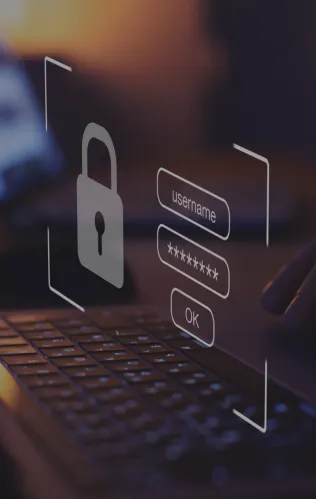2020 brought one of the largest disruptions to modern education in recent years. With students heading home for most of the year and engaging through laptops, desktops, and video conferencing tools, therefore some course materials went digital by default.
Whether or not distance learning remains and becomes the future of education, we do know one thing: digital course materials represent a significant improvement over physical textbooks.
This doesn’t mean just any digital textbooks— we’re talking about course-specific digital textbooks that are custom-curated to align with your course’s unique curriculum. From accessibility to adaptability, course-specific resources have benefits for both professors and students alike.
Our friends at Skyepack, have done research to understand the benefits of custom digital course materials. We’ve compiled this guide to help you understand these benefits as you begin prepping your curriculum for the next year:
- Benefits for Students
- Benefits for Professors
Course-specific digital textbooks are more accessible, engaging, and affordable for students. For professors, these materials are custom-curated and can be updated over time. Let’s dive into these benefits in the following sections.

Benefits for Students
Online course materials are immediately accessible.
Heavy, physical textbooks are cumbersome to carry around and at times, difficult to acquire. For students who purchase physical books, they can be incredibly expensive; for students who rent books, they’ll need to return them after the course and won’t be able to continue referencing them.
Even if students are working from home with digital tools and won’t need to lug materials across long distances, there are still convenience and accessibility benefits of course-specific digital textbooks. For example, digital course materials are:
- Immediately available. Attempting to secure physical textbooks at the start of the semester can come with a barrage of challenges, from lines at campus bookstores to delayed mailing times. This hinders students from completing start-of-semester reading assignments, which can have a domino effect for the rest of the course. Custom online course materials are immediately available, so students can dig in on day one.
- Accessible on multiple platforms. Digital course materials can be accessed via mobile phones, laptops, and tablets alike. Students can access the material through the technology of their choice and have a comparable experience across the board.
- It’s rare that you’ll find a ready-made textbook that perfectly addresses your unique course material. This results in a cobbled-together list of expensive textbooks, free PDF downloads, and online articles. With custom, course-specific digital textbooks, you’ll have a resource that’s made to meet the unique needs of your curriculum centralized in one resource.
- Ease of Use. Course-specific digital textbooks are much easier to look through and read. With viewer functionalities and digital in textbook links, locating relevant information is much easier than in traditional paper books. The significant speed increase for students can help in open-book exams and problems. If you have students who are fans of traditional bookmarks, this is also available in course-specific digital textbooks. Students can add bookmarks and highlight the information they wish to reference at a later time.
Plus, students can continue referencing their digital course materials long after the course ends. Rather than completing their course, returning their textbook, and forgetting all of the information they’ve learned, students can keep this resource and continue referencing it as their education progresses. This will help students see the value in your course long after they’ve left it.
Course-specific digital textbooks are engaging and interactive.
The possibilities are limited with physical or even ready-made digital textbooks. While printed words and images can convey the needed information, they’re less effective when it comes to grabbing and maintaining the interest of your students.
This guide to instructional design trends notes the rising importance of interactive learning for empowering students to engage more deeply with content. Course-specific digital textbooks can be custom-curated or even newly-authored to incorporate engaging elements such as:
- Embedded assessments
- Drag-and-drop exercises
- Video and audio recordings
- Photos, charts, and infographics
- Animations
Not only do these elements allow you to engage a variety of students with different learning styles, but students are also encouraged to take an active role in their education. Rather than a passive viewing experience, course-specific digital textbooks provide a hands-on learning experience.
Custom course materials are often more affordable.
Did you know that college students pay approximately $1298 on textbooks alone? Or, that between 2006 and 2016, the price of textbooks rose by a whopping 88%? Or, that 65% of college students have avoided purchasing materials for class because they were too expensive?
These statistics paint a clear picture: traditional textbooks are expensive, and they’re the first cost to be cut when students are strapped for funding.
In response to this, there has been a push for more affordable textbooks— especially in the context of higher education. This movement has focused on EdTech, but not every solution is sustainable. For example:
- E-textbooks are digitized versions of physical course materials, such as textbooks. However, while they are digital, they’re often just as— or more— expensive as their physical counterparts. This is because they’re still part of the traditional publishing landscape.
- Open educational resources (OERs) are openly licensed to be used by instructors and students. While these resources are free to use, they can also be freely modified by those users. The quality of these resources can vary greatly, and it can be challenging to cobble together resources to meet the needs of your syllabus.
Neither e-textbooks nor OERs represents a perfect digital solution to textbook affordability. On the other hand, course-specific digital textbooks can often be provided to students at a much lower price point than digital textbooks while providing significantly higher quality than OERs. These materials are often available for a flat fee or even bundled with tuition. They’re also provided to students with lifetime access.
Benefits for Professors
Online course materials are custom-curated.
As a professor, you invest significant time into crafting a course that conveys core subject matter, meets student requirements, and reflects your unique expertise on the subject at hand. However, finding the right textbook materials to align with that course can be challenging at best and impossible at worst. You may find a textbook that somewhat meets your needs, assign multiple expensive materials, or even attempt to write your own materials in a labor-intensive effort.
Course-specific digital textbooks are curated and created specifically for your curriculum. The heavy lifting is handled for you, rather than you spending hours upon hours attempting to source appropriate material. For example, Skyepack proposes an agile instructional design process that takes just a few months to complete:
- Analyze learning objectives, topics covered, current resources used, and more.
- Research available learning resources related to the topics and learning objectives.
- Design the layout and flow of course content.
- Curate high-quality, peer-reviewed content and author new resources as needed.
- Build the course aligning with specifications outlined in the previous steps.
- Launch the course and provide access to professors and students.
And lastly, repeat the steps as needed to update the course in the future.
With course-specific digital textbooks created in a process such as this, your students’ assigned readings will align with what they’re learning in class each day. And, the resource can be delivered on the platform of your choice, whether your school website or other EdTech.
Course-specific digital textbooks are adaptable.
Curriculum development is defined as “the multi-step process of creating and improving a course taught at a school or university.” This tells us that curriculum development isn’t a one-time project, but instead a continuous improvement process.
This is why textbook publishers often release yearly editions and updates to their materials— while these are often repackaged content with a few small updates, they are aimed at meeting a professor’s curriculum changes year after year. However, purchasing new books each year can quickly add up.
On the other hand, digital course materials can be updated to reflect changes in:
- For example, this could mean updating courses to include new interactive elements, such as drag-and-drop knowledge checks or a built-in notetaking resource.
- Core concepts. This includes updating course material as guidance in your field changes. For example, if you’re teaching a course on marketing, the information in your course can be updated to include notes about how brands are using social media to connect with their audiences.
- Lesson plans. As your lesson plans change, you can update digital course materials to align with the new organization. For example, let’s say you choose to move a lesson to the end of the year rather than starting off with it— then, that section of the digital textbook can be moved to appear later and align with when students will encounter it.
The process of developing digital course materials is a cycle, so materials can be updated to remain relevant for your curriculum as it evolves. This is a more cost- and resource-efficient solution over time, rather than crafting new materials from scratch each time.
In addition, there are Student and Learning Management Systems used by institutions of all levels that support digital libraries, where all the course-specific digital textbooks can be stored and cataloged for the convenience of professors and their students. SMS and LMS platforms such as Classter offer digital libraries through a library management module. If the goal is to remove the physical barriers that traditional paper textbooks present, why not remove the need for a physical library as well?
Wrapping up, we know that paperless learning is the future of education. However, this is reliant on investing in the right paperless resources for your courses.
Cobbling together OERs or piling on a variety of expensive digital resources can lead to an ineffective or otherwise expensive solution. On the other hand, course-specific digital textbooks have benefits for both students and professors alike, from affordability, engagement, and accessibility to custom-curation and adaptability over time. It’s easy to see why course-specific digital textbooks should be on your radar for 2021 and beyond!
FAQ’s
Course-specific digital textbooks are custom-curated resources tailored to align with a specific course’s unique curriculum. Unlike traditional textbooks, they offer immediate accessibility, interactive elements, and affordability for students and professors.
Classter offers seamless integration with SMS and LMS platforms, allowing educational institutions to manage digital textbooks, course materials, and resources efficiently. Through its library management module, Classter enables easy cataloging and access to digital resources for professors and students.
Classter supports continuous curriculum development by facilitating the creation, customization, and updating of course-specific digital textbooks. Through its agile instructional design process, Classter ensures that materials remain relevant and aligned with evolving curriculum requirements over time.






